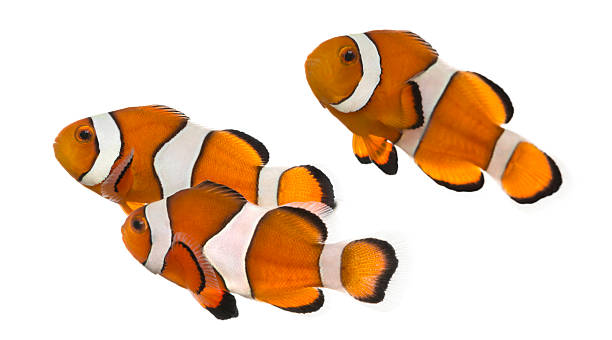The clownfish, with its vibrant colors and distinctive markings, is a fascinating and iconic species found in the world’s tropical oceans. Popularized by animated movies like “Finding Nemo,” these small, yet resilient fish have captured the imaginations of people worldwide. In this article, we’ll delve into the captivating world of clownfish, exploring their biology, behavior, symbiotic relationships, and the challenges they face in the ever-changing ocean environment.
Biology and Habitat:
Clownfish, scientifically known as Amphiprioninae, are a subfamily of fish belonging to the Pomacentridae family. They are primarily found in the warm waters of the Pacific and Indian Oceans, typically inhabiting coral reefs and lagoons. One of the most distinctive features of clownfish is their striking coloration, which includes shades of orange, black, white, and sometimes yellow. These vibrant colors not only serve as a visual spectacle but also play a crucial role in their survival within the coral reef ecosystem.
Symbiotic Relationship with Anemones:
One of the most intriguing aspects of clownfish behavior is their unique symbiotic relationship with sea anemones. While the tentacles of sea anemones contain stinging cells that are harmful to most fish, clownfish have developed a remarkable immunity. They find refuge among the tentacles, using them as a protective shield against predators. In return, clownfish provide sea anemones with food scraps and help ward off parasites, creating a mutually beneficial partnership.
Clownfish Societal Structure:
Clownfish live in small groups, typically consisting of a dominant breeding pair and several subordinate individuals. The social structure within these groups is hierarchical, with the largest and most dominant fish being the female. In the absence of the dominant female, the dominant male transitions into a female, showcasing a remarkable ability known as protandry. This unique adaptation ensures the group’s reproductive success, as the next-largest male takes on the female role.
Reproduction and Parental Care:
Clownfish are oviparous, meaning they lay eggs. The breeding pair prepares a nesting site near their sea anemone home, typically a flat surface on the coral. The male cleans and maintains the nest, and once the eggs are laid, both parents diligently protect them from potential threats. The male guards the nest, while the female provides protection against predators and assists in keeping the eggs clean. This dedicated parental care ensures the survival of the clownfish offspring.
Challenges and Conservation:
Despite their remarkable adaptations, clownfish face several challenges in their natural habitat. Coral reef degradation, overfishing, and climate change pose significant threats to their survival. The sensitivity of clownfish to changes in their environment, particularly the health of coral reefs, makes them vulnerable to these anthropogenic pressures. Conservation efforts are crucial to preserving the delicate balance of these ecosystems and protecting the diverse marine life they support.
Conclusion:
Clownfish are more than just characters in animated films; they are integral components of the intricate tapestry of coral reef ecosystems. Their vibrant colors, unique behaviors, and symbiotic relationships make them a subject of fascination for marine enthusiasts and researchers alike. As we continue to explore and understand the complexities of the ocean, it becomes imperative to prioritize conservation efforts that safeguard not only clownfish but the entire underwater world they call home.

